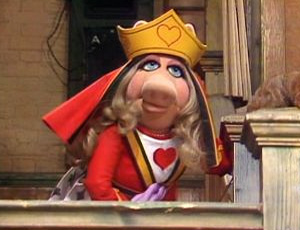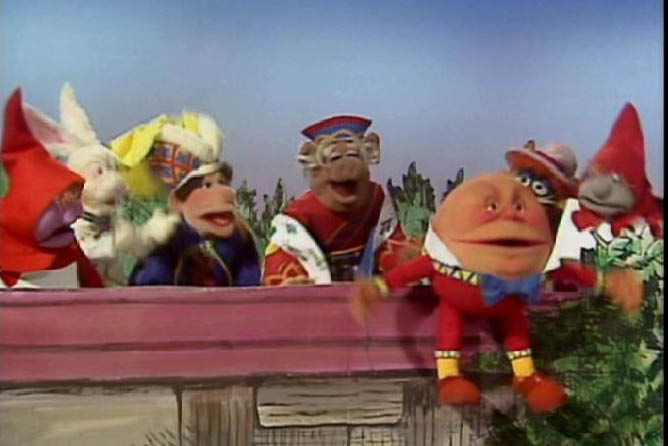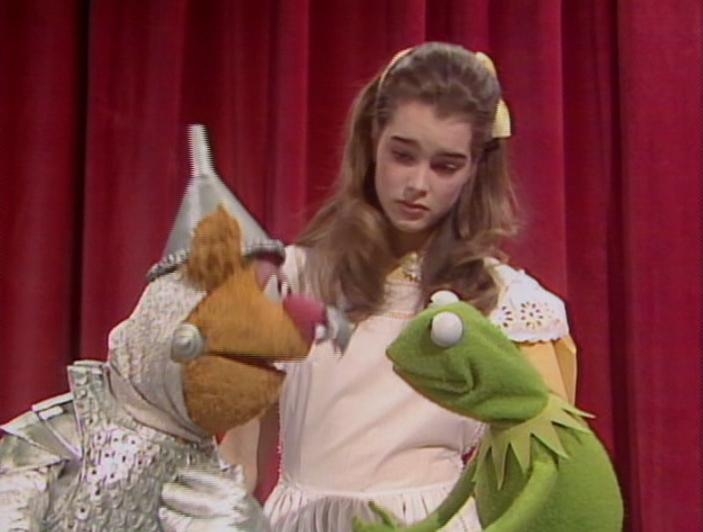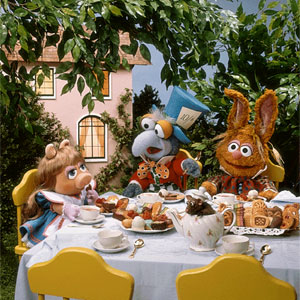By the time the fifth season came around, The Muppet Show became really big on "theme episodes." While many memorable episodes surfaced during this era, a lot of them fell into the trap of feeling too rushed. The concept episodes aimed too high and couldn't quite deliver the best product. Episodes like Marty Feldman's "1001 Arabian Nights" episode or Liza Minelli's "murder mystery play" episode were all over the place, leaving little time to appreciate the stories they tried to tell.
But one theme was perfectly suited to a random assortment of radical characters, jokes, and events. One episode where the less sense it made, the better. The Muppet Show took on Alice in Wonderland in "Episode 506: Brooke Shields."
On the surface, this feels like a straightforward episode teetering on mediocrity. There is barely a structure, young Shields mugs on every single line, and once again, everything feels a bit rushed. But, there is evidence that a lot of care and effort went into the creation of this episode, and all of the faults are actually clever allusions to the source material.
First, let's look at the structure. The Alice in Wonderland novels, like A Christmas Carol, have been adapted many times for stage and film, despite the misconception that the book is difficult to translate to film. It's episodic nature and lack of a clear plot does not fit with traditional storytelling, and attempts to bring it to the screen have met with mixed results. But, ironically, it is the versions that try to add a coherent story to the original material that fail the most. Each little moment in the story is memorable and completely unrelated to the chapters before and after it. Filmmaker's just choose their favorites, and over time, these characters and events become familiar to the general public.
By the time this episode aired, about a dozen filmed versions of the story had been made. This allowed the writers to have their pick of the scenes they wanted to portray and run with them. The story, as depicted by the Muppets, follows the traditional plot, with Alice sitting by the riverbank and following the White Rabbit down the rabbit hole.
So far so good.
But, as soon as she begins falling, nearly all of the characters appear and start singing an original song about the strangeness that's about to occur. The most telling part of this song are the lyrics:
Don't be surprised if you meet Captain Hook
'Cause our version won't always follow the book!
This is going to be crazy!
And true to their word, the story starts deviating from the original as soon as she lands. Kermit and Scooter introduce each act as "the [blank] scene" as if there is no attempt to tell the story linearly at all. This works, because they expect the audience to be familiar enough with the story that when they talk about, say "the Caterpillar scene," we know that a hookah-smoking caterpillar sitting on a mushroom will be confusing Alice very soon.
Speak of the devil!
Now, there is still a story driving this episode and that involves Brooke Shields finding herself in Alice's role, literally. Shields' line-reads are very stiff, and she just feels out of place, like she can't keep up with the rest of the cast...which is exactly the way Alice needs to be. Alice is in a strange new world and she doesn't belong at all. Shields manages to remain wide-eyed and intrigued by the madness going on around her,. It helps that, at 14, she was the youngest guest star to ever appear on the show.
Shields's personal life, up until this time, was very reminiscent of the actual Alice Liddell whom the stories were based on and told to by author Charles Dodgson (a.k.a. Lewis Carroll). She began her career at a very young age, becoming involved in pre-pubescent photo modeling, placing her in the world of celebrity without her consent whatsoever. Only recently had she begun acting and, during the same year she filmed this episode, she famously starred in the controversial film The Blue Lagoon, which dealt with very mature themes, yet starred adolescents. Her childhood was unusual to say the least, making her a perfect casting choice to play Alice.
At last, she can be innocent and sweet.
Just how high is the Muppet Theater ceiling anyway?
She ends up getting trapped in her dressing room, recreating the scene from the story in which Alice gets trapped in the White Rabbit's house.
The magic of television!
With Alice out of commission, other scenes from the novels are depicted in random order, but at this point it doesn't really matter because we get to experience our favorite characters playing roles that they are naturally suited for (and if not, then at least they make them their own). In fact, this is a good time to mention what really made this episode special: the visuals. I don't mean the special effects. The sets and the costumes are directly inspired from John Tenniel's original illustrations from Alice in Wonderland. Director Malcolm Stone was nominated for an Emmy for this episode based on the scenery and costumes alone. If you watch this episode, you'll notice that about half the characters are the regular Muppet cast and the other half are original puppets created solely for making it look like the original story.
Curiouser and curiouser.
The original illustration (in case you needed the reference).
In addition to Floyd as the Caterpillar, we get many other great connections between the two sets of characters. There is the whole Jabberwocky scene, for instance, which is often left out of many adaptations. Scooter and Rowlf play the lead characters while traversing through the Tulgey Wood, complete with unique beasts exactly as they were depicted in the poem.
Especially the Jub Jub birds (seen here with some Mome Raths)
The Jabberwock itself is a masterfully created puppet, which makes it a shame these characters could only appear for just one episode.
Scooter, our valiant hero, about to slay the beast.
Other great characters that appear include:
Miss Piggy as the Queen of Hearts
And she actually tries to kill Alice/Shields during the episode!
The White Rabbit
He's probably upset because Kermit keeps pronouncing it "Wonderlind."
Statler and Waldorf as Tweedledee and Tweedledum
Apparently, they can just walk on stage whenever they feel like it.
The Jar of Orange Marmalade
One of the most underrated jars in the whole story!
Humpty Dumpty, the Duchess, and Link Hogthrob as the King of Hearts
Very complex puppet designs that are regulated to the background, mostly.
Dr. Teeth as the Cheshire Cat
Whose body has somehow actually become that of a small cat.
and Fozzie Bear and as the Tin Woodsman.
...Wait a minute.
Another scene, in which much attention has been paid to the finer details is the Trial scene. Although the judge was the King of Hearts in the story, Marvin Suggs is dragged out so he can hit as many people as possible with his mallet. But the interesting thing is that the members of the jury are made up of the correct assemblage of animals as depicted in the books. They don't do anything in the scene, but the director felt the need to include them anyway. That's dedication.
Couldn't find a picture of them though, so here's Kermit moments before a gavel to the face.
Finally, the episode concludes with the most famous scene from the novel, the Mad Tea Party. With Brooke back to her regular size, she can join Gonzo as the Mad Hatter for a ludicrous ending to a ridiculous episode.
Why isn't Rizzo playing the dormouse?
Oh, because he's playing the Wizard of Oz! ...Wait a minute.
That's right, the episode ends with the entire cast singing "We're Off to See the Wizard," because... because... because... because... because... because of the wonderful things he does.
Don't try to understand it. Just let it happen.
As a fan of both Alice in Wonderland and the Muppets, I found this to be a delightful collaboration. It may not be everyone's favorite episode. It may not be the best episode. But, the attention to detail is perfect,and the amount of fun that was clearly had in tearing apart this classic book is evident the whole way through. The Muppets, like the denizens of Wonderland, are a breed unto themselves. They don't have to confine to society's rules. They can just be who they are. And that it why this nonsensical show makes so much sense to us.
And it had heart the whole time.
* * *
While we're on the topic of Alice in Wonderland, I thought it was worth noting that the Jim Henson Creature Shop supplied Wonderland puppets to two movies based on the books: 1985's Dreamchild, which was the first non-Henson movie to use Henson puppetry, and the 1999 television version of Alice in Wonderland. Both of these films I highly recommend, as the puppetry and animatronics are quite impressive, but since they aren't true Henson films, I wasn't going to discuss them on this blog.
So here is a picture of the Mad Tea Party scene as depicted by the Muppet Babies!
Awwwwwww.
























No comments:
Post a Comment